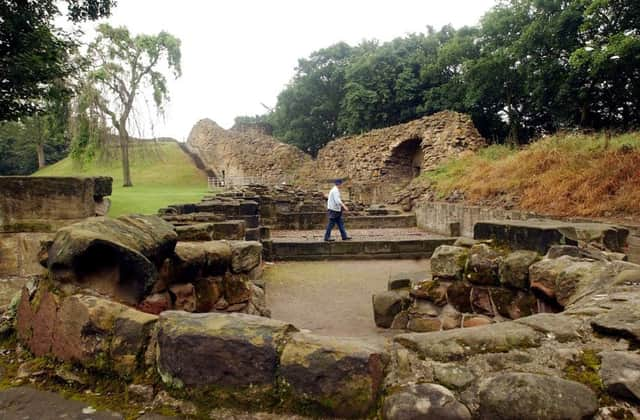Pontefract Castle lives to fight another day as embattled restoration ends


Four years of work at the hilltop fortress that overlooks Pontefract has seen one contractor go into liquidation and another dismissed. But today its guardians will announce that the project is finally complete.
It has involved opening up previously inaccessible parts of the site, building a new visitor centre and bandstand, and laying paths, steps and a viewing platform above the 14th century Swillington Tower.
Advertisement
Hide AdAdvertisement
Hide AdThe castle, built on an outcrop above the old North Road and besieged during the English Civil War, is owned by the Duchy of Lancaster and held in trust for the Queen. But the £5m of work has been funded mainly by the Heritage Lottery Fund, Historic England and its custodian, Wakefield Council.
Last year, its restoration was said to be in the balance after the council terminated the contract of the building contractor, following what it said had been months of inactivity on the site. The firm had been brought in after a previous contract fell through.
The council said at the time that although no money had been forfeited, “we have lost time on what is an enormously important project for the council and Pontefract”.
The restoration project, known as Key to the North, had begun in September 2015, with the aim of taking the castle off Historic England’s “at risk” register and opening up parts of the site that had been closed off to the community for years.
Advertisement
Hide AdAdvertisement
Hide AdBut work ground to a halt 14 months later when the first contractor went into administration.
Jacqui Speight, the council’s cabinet member for culture, said she was “delighted” that the work had been finally completed by its third contractor, Stone Edge North East.
“This is a very exciting time for all of us who have been involved in the project,” Coun Speight said. “The final work to stabilise the King’s Tower has been completed and the scaffold has come down, along with the compound on Castle Garth.
“I’m sure visitors will be impressed by what they see.”
The castle has remained open during the restoration, and although some areas have been temporarily inaccessible, visitors have been able to watch the stonemasons replacing old cement with more traditional lime mortar.
Advertisement
Hide AdAdvertisement
Hide AdTrevor Mitchell, regional director for Historic England, said the monument, one of “our great Northern castles”, had overcome “significant challenges to reach this point”.
He added: “We’re thrilled that the work has now been completed.”
Access to the castle is free, with paid tours of the dungeons.